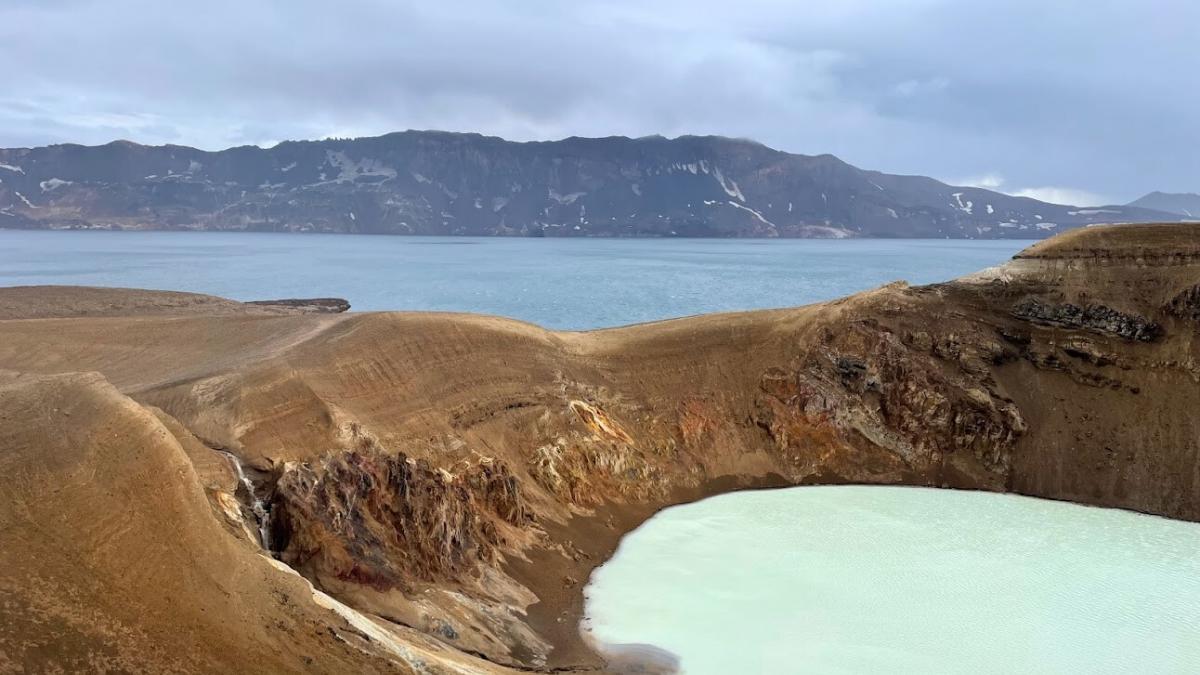The Askja caldera is enormous. It is located 1.500 meters above sea level, some 30 kilometres north of the Dyngjujökull glacier, part of the Vatnajökull glacier. The caldera is some 50 square kilometres wide (31 square miles and is surrounded by the Dyngjufjöll mountains. In a catastrophic eruption in 1875 two lakes formed within it. One is the 11 square kilometre Lake Askja, which is a whopping 220 meters deep, the second deepest lake in Iceland. Only Jökuslárlón glacial lagoon is deeper at 280 meters. The other lake (or lagoon) in the Askja Caldera is much smaller; it is called Víti, which means ‘Hell.’ The sudden explosion which created the Víti lagoon, spewed noxious fumes and ash all over East of Iceland. The emissions from the explosions were detected as far east as Scandinavia.
Subscribe to my newsletter for exclusive discount codes that will give you savings on 150 Iceland tours and travel services.
Subscribe to the Stuck in Iceland newsletterReceive exclusive promo codes for tours, car rental, camper van rental, and outdoor clothing rental. Get occasional updates about new content. I will never give your data to a third party without consent.
Thank you
Jon Heidar, Editor of Stuck in Iceland Travel Magazine

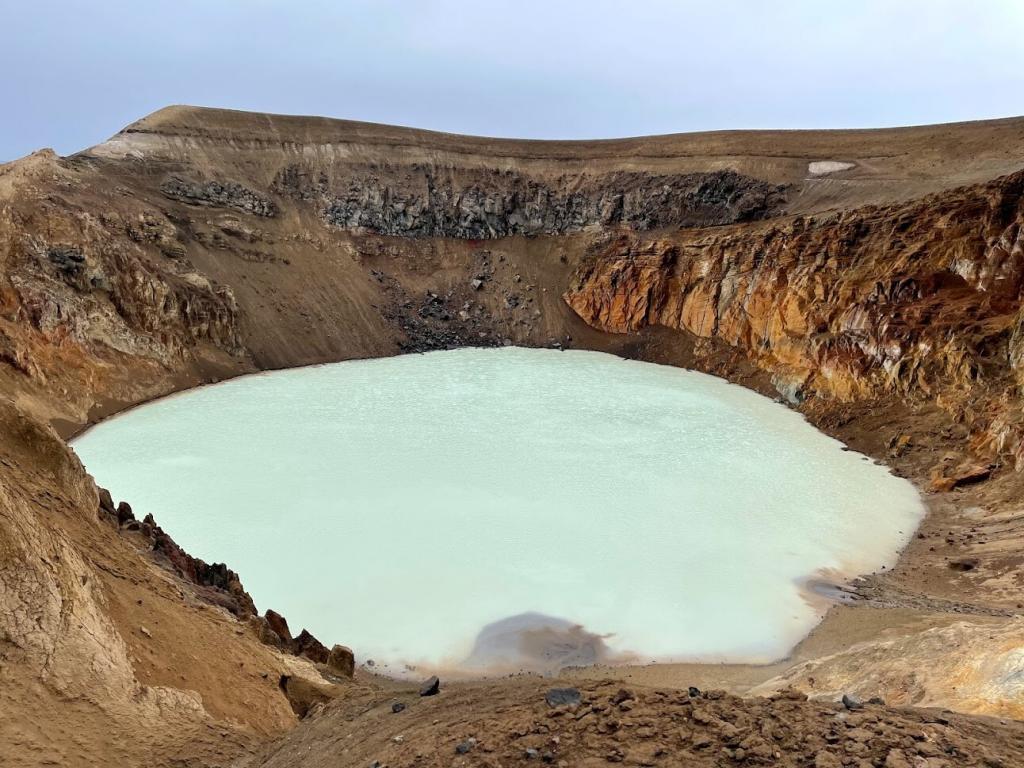
The case of the disappearing scientists
In 1907 two German scientists Walter von Knebel and Max Rudloff went missing on Lake Askja. They were out on a boat exploring the lake when they suddenly went missing. One theory is that a landslide triggered a tsunami in the lake, which engulfed them. In 2014 a landslide caused 30 meters high waves on the lake. But no one will ever know what caused the demise of those scientists as their remains have never been found.
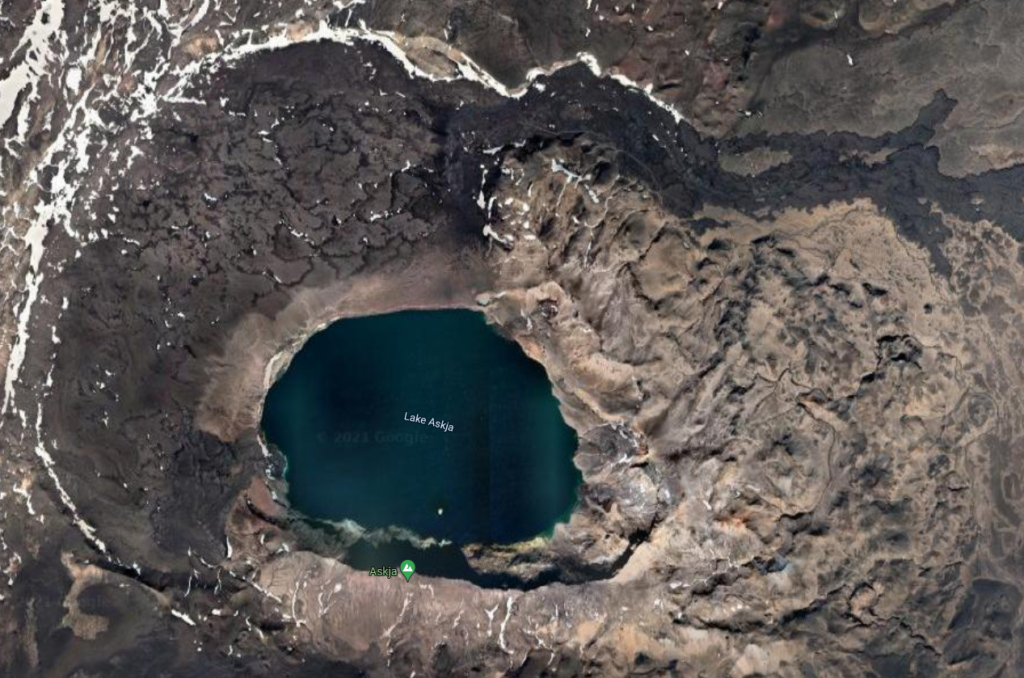
Askja caused hardships and sorrow amongst Iceland’s poor
A massive eruption in 1875 created Lake Askja and Víti. The resulting ash-fall laid waste to farms in the north and east of Iceland. Thousands were displaced, and many ended up in Canada and some in the United States. Being a smallholder farmer in Iceland was awful, but when ash covers everything and kills the livestock you eek a living out of, well, it is even worse. For those desperate people, Askja was the caldera of sorrow that drove them away to another continent where they would meet many additional hardships. Askja has erupted eight times in the 20th century and it might be gearing up for more havoc in the 21st century. The sophisticated measurement tools that geologist use to monitor the caldera report the land there rising.
Highlands winds pack a punch
The Askja caldera was one of the places I was lucky enough to be able to visit last summer in my trip around the northern highlands. The highland trip also took me to Kverkfjöll, and Herðubreiðarlindir oasis. At Askja, the weather was terrible. We faced a strong headwind and rain, which pelted us on the way toward Víti and Lake Askja. We had a scheduled trip with a park ranger who told us that when the wind is blowing strongly towards Víti and the lake, they would sometimes stop people going up there. At this altitude, the winds in the Icelandic highlands can pack a punch and push people unwillingly down a steep muddy slope and into deep water.
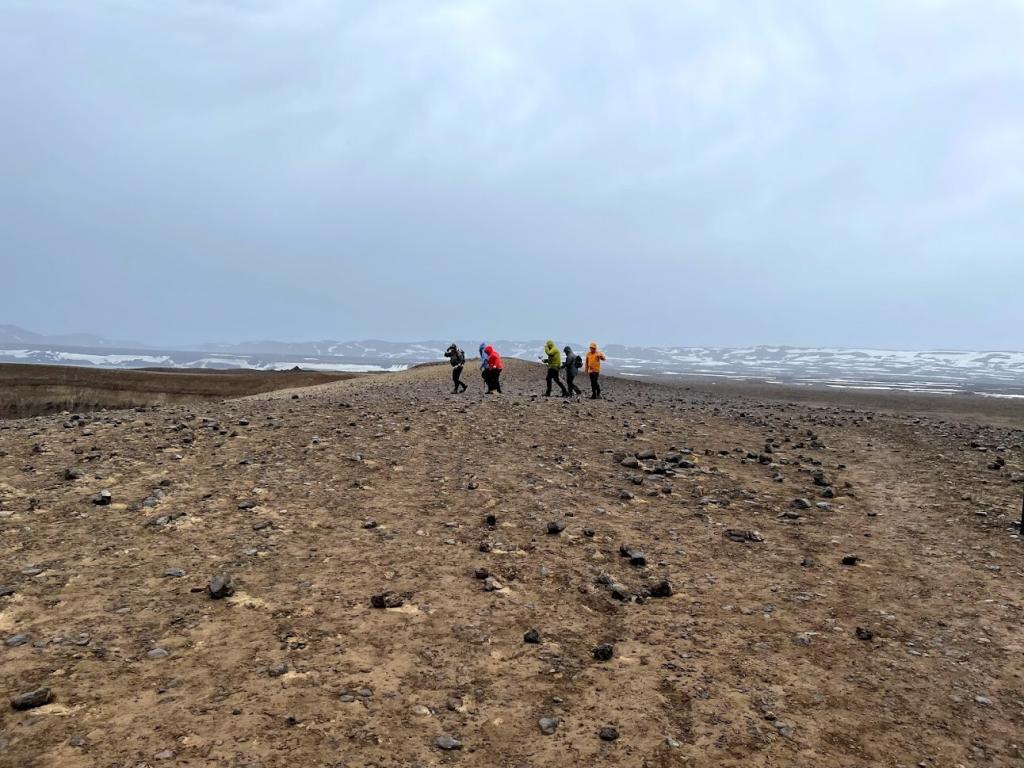
No swimming in Hell this summer
I had boasted that I might take a swim in Víti as many have done. I might even have said that I would go skinny dipping in Víti as it is popular with European (German) visitors. But it was so freaking cold in the gale-force wind I had no interest in doing so. I might return in better weather. And remember that life is short, and you have to do outrageous things once in a while, or not!
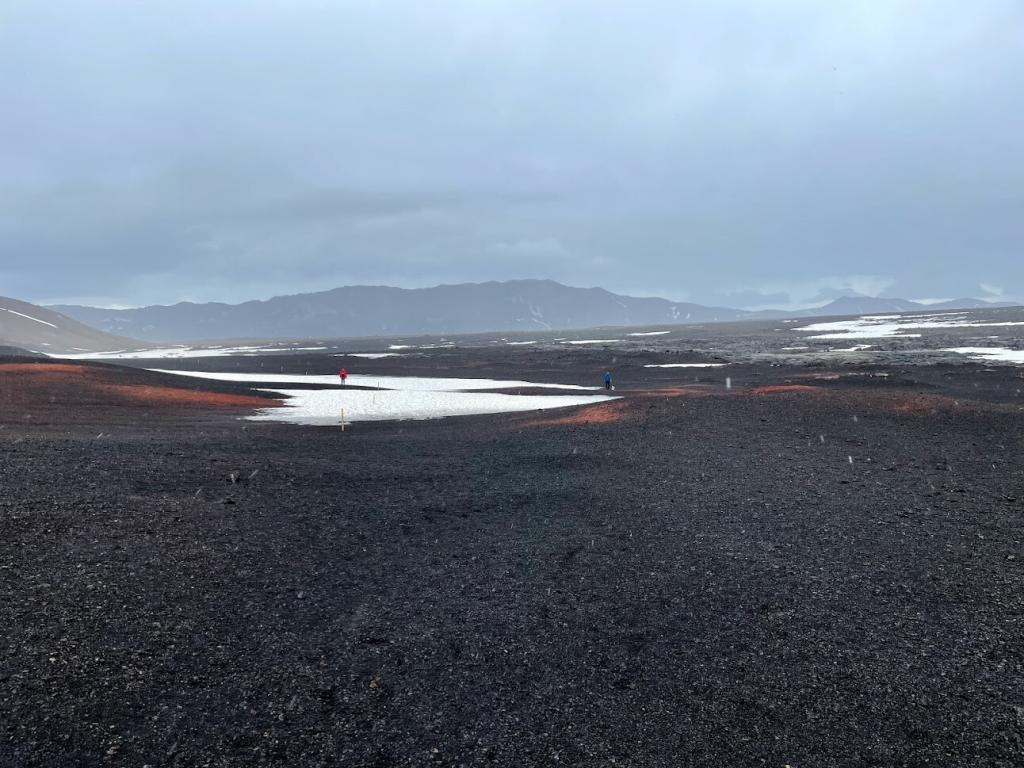
The photos you see result from antisocial behaviour
The ranger did her best to tell us about geology and past volcanic activity in the caldera. She did her best to make herself heard above the wind and rain. After a short hike, I ploughed ahead of our group, put my head down, and hurried against the gale. This somewhat antisocial behaviour was the only reason I got at least some photos of Víti and lake Askja. When my wife, the guide, my brother in law and his wife and some other travellers in our group caught up with me, the weather was just horrendous.
Pilgrimage for the people who suffered at the hands of Askja
Everybody was eager to turn their backs to the roaring wind and rain and hurry back to our warm car. I thought on the way back that this was the least we could do, suffer a little bit on our way to Askja and on our way back to the parking lot. It was nothing compared to the pain Askja caused people back in 1875. And as I mentioned earlier, geologists say that the land is rising, magma might rumbling below the caldera. Who knows what more sorrows Askja has in store.
How to get to Askja Caldera
Follow road F-894to Vikraborgir car park. From the car park it is about 3 KM long hike to Víti lagoon and Lake Askja. Always follow guidelines from the Safetravel web site when you are traveling the Icelandic highlands, and do what the rangers tell you to do.


